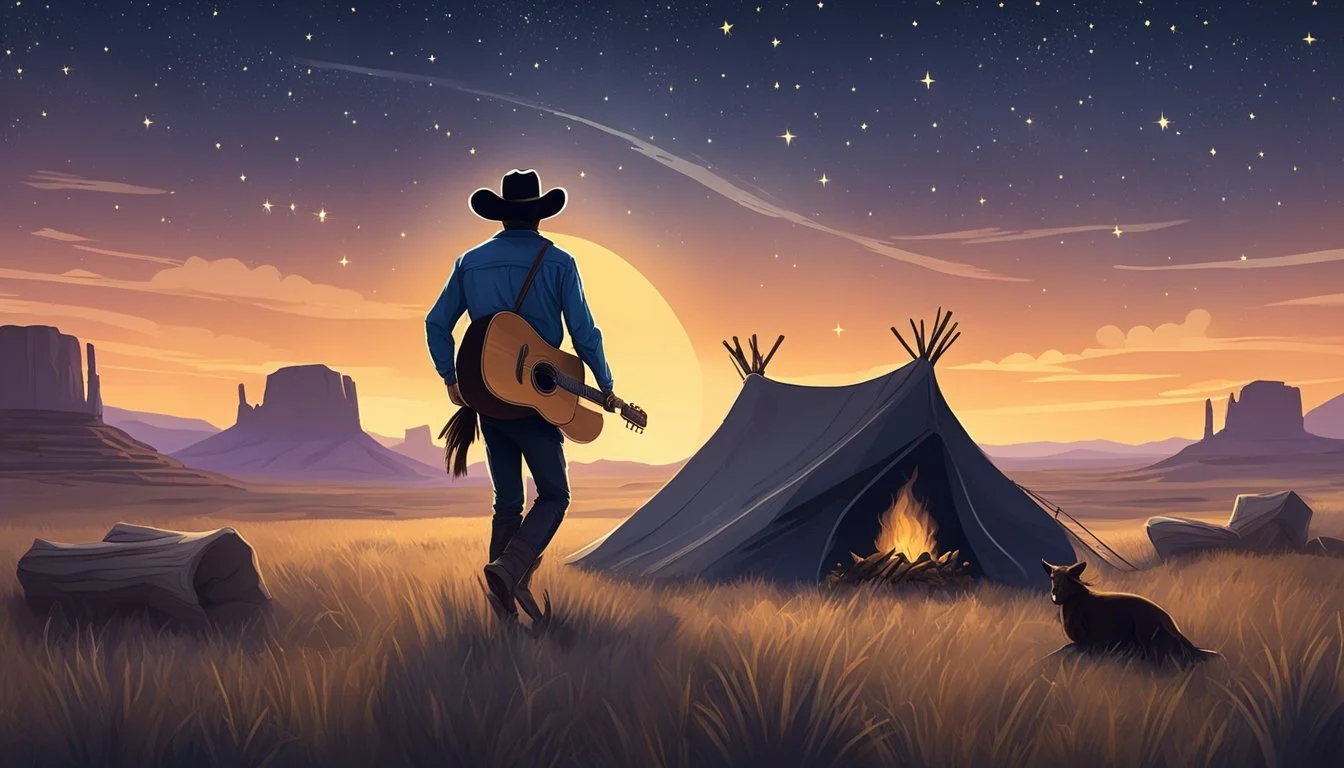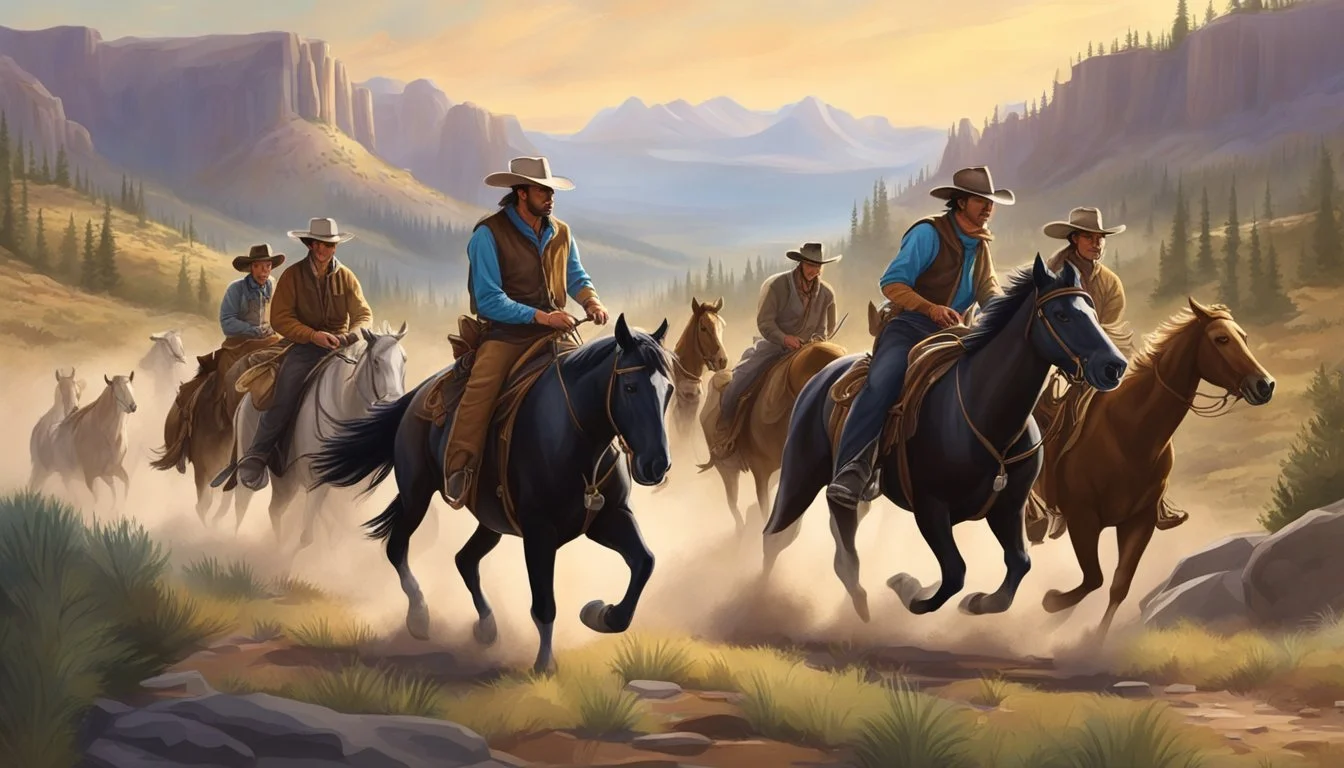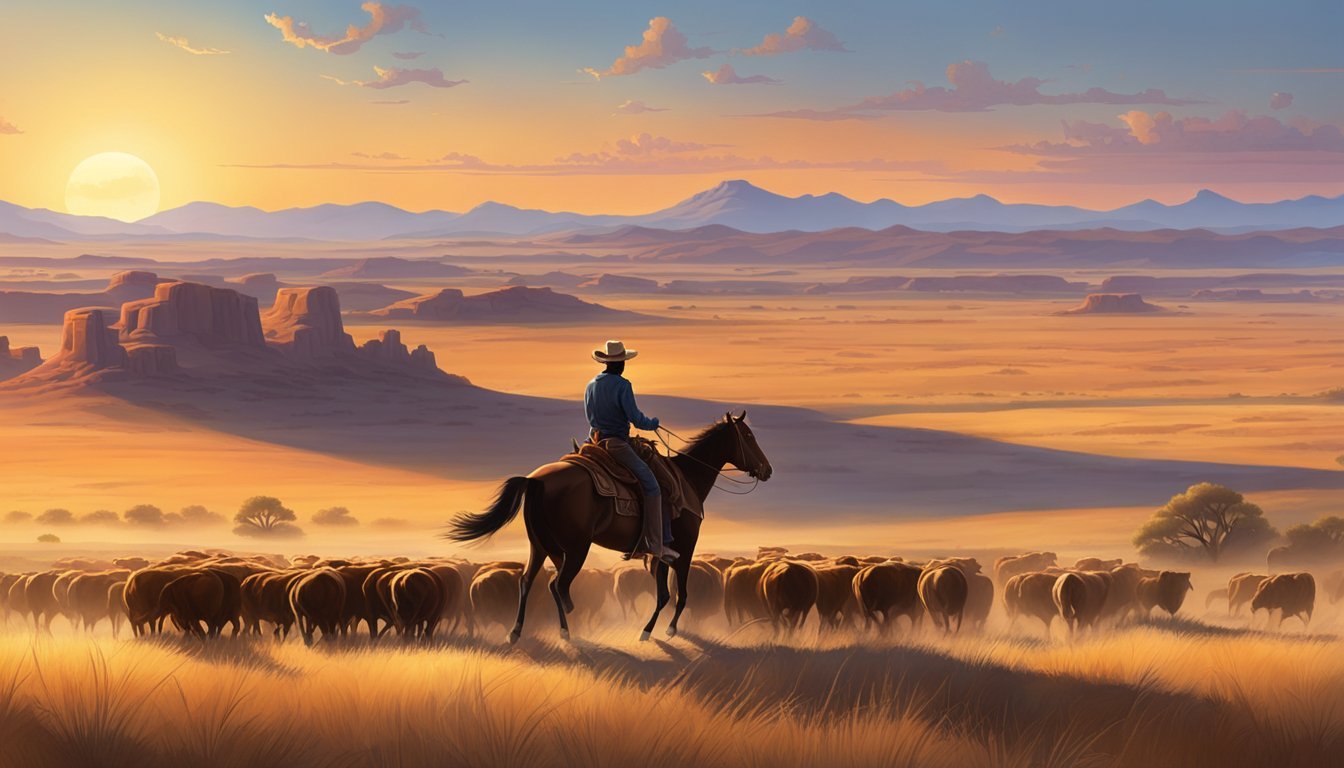The Connection Between Cowboys and American Folklore
Unraveling Cultural Myths
The cowboy stands as an iconic symbol deeply ingrained in American folklore and cultural identity. This figure epitomizes the rugged individualism and frontier spirit that have been historically celebrated as quintessential American virtues. Rooted in the experiences of 19th-century cattle herders, the image of the cowboy has been romanticized and mythologized over time, taking a prominent place in American legend. These cattle herders, often solitary figures on horseback, navigating the vast expanses of the American West, have become synonymous with freedom, bravery, and self-reliance.
In American culture, the cowboy's influence extends far beyond the historical reality of their existence. Popular media, including literature, film, and television, have shaped and perpetuated the cowboy myth, embedding it within the national psyche. This portrayal often overlooks the multicultural origins of actual cowboys, consisting of a diverse group including European settlers, Indigenous peoples, and African Americans. Instead, the cultural myth tends to present a homogenized image shaped largely by the values and ideologies of the time.
These representations carry with them underlying narratives about American history and society. They serve as a lens through which aspects of the American experience — connectivity to the land, conflict and cooperation, and the notion of manifest destiny — are explored and understood. The cowboy becomes not just a historical figure, but a symbol through which America negotiates its own identity and mythology.
Historical Origins of Cowboys
The American cowboy has its roots steeped in a blend of Native American, European, and Mexican influences. When Spanish explorers and settlers arrived in the Americas, particularly the regions that would later become Mexico and the Southwestern United States, they brought with them the practices of ranching and livestock herding. The vaquero, Spanish for 'cowboy,' was a skilled horseman adept in cattle herding, a labor essential to the ranches.
These ranching techniques evolved, blending with Native American and European methods. Over time, as territories like Texas, California, and Louisiana changed hands through colonization and treaties, a distinctive cowboy culture began to form. It was a melding of cultures where Native American horsemanship, Spanish equestrian traditions, and European livestock handling converged.
The cowboy became a central figure in the cattle drives across the American West, particularly along famous routes like the Chisholm Trail—a major path that led from Texas through Oklahoma to railheads in Kansas towns such as Abilene, Dodge City, and Ellsworth. These drives were crucial in transporting cattle from the more remote ranches of the West to markets in the East.
The cowboy’s image is often associated with the romanticized frontier, a symbol of pioneer freedom. The reality, however, was that cowboys were diverse, composed of white settlers, Mexican vaqueros, African Americans, and Native Americans, each contributing their own techniques and heritage to the cowboy legacy. This diverse workforce helped shape the early cattle industry in places ranging from the deep South of Texas to the open expanses of California and the Mexican borderlands.
Their history is not just a chapter of the American past; it is woven into the nation's identity and folklore, representing a complex tapestry of cultural exchange and adaptation on the frontier.
Cowboys and American Folklore
Cowboys have woven their way into the very fabric of American folklore, embodying values such as rugged individualism and manifest destiny, and playing a central role in the nation’s narrative through various forms of art and popular culture.
Literature and Novels
Cowboys galloped out of the real world and into the pages of American literature, where they became larger-than-life figures. Owen Wister's novel "The Virginian" laid down the archetype of the cowboy in American literary tradition. Later, works by authors like Zane Grey and Louis L’Amour built upon this, solidifying the cowboy’s place in American folklore.
Key works:
Owen Wister's "The Virginian"
Fenimore Cooper's tales of frontier life
Movies and Hollywood
Hollywood has been instrumental in crafting the cowboy’s mythical stature. Films, beginning with the silent era and epitomized by actors like John Wayne, reinforced the cowboy as a symbol of American values and spirit. The portrayal of cowboys in these films often depicted them as heroes confronting the wilds of nature and the challenges of the Wild West.
Noteworthy icons:
John Wayne – A quintessential portrayal of the cowboy hero
Visual Art and Imagery
Visual artists such as Frederic Remington captured the rugged essence of the cowboy and the beauty of the American West. Through painting and sculpture, the visual narrative of the cowboy was etched into American culture, often highlighting the relationship between the cowboy, their lariat, and the untamed land of the West.
Pivotal artist: Frederic Remington
Music and Ballads
Cowboys are immortalized in American music through ballads and country songs that narrate tales of cowboy life, reflecting its hardships and the vastness of the frontier. These musical pieces serve as an aural complement to the folklore, echoing the cowboy’s intimate connection with the landscapes of Louisiana and beyond.
Cultural influence: The traditional cowboy song “Home on the Range”
The Socio-Cultural Impact of Cowboys
The American cowboy is deeply interwoven into the fabric of American folklore, embodying concepts of freedom, rugged individualism, and shaping the national identity. This section explores the depth of the cowboy's influence on culture and politics.
Symbolism and American Identity
The cowboy stands as a symbol of the American identity, often representing the idea of the American Adam—a figure of pure, unfettered individualism and moral integrity. They encapsulate the spirit of the frontier, synonymous with self-reliance and the unyielding pursuit of the American Dream. Cowboys are perceived as national heroes whose ethos reflects core American values, such as liberty and hard work.
Influence on Popular Culture
Westerns in Hollywood: These films popularized cowboy imagery and dramatized the Wild West.
"Stagecoach" (1939) directed by John Ford
"High Noon" (1952) starring Gary Cooper
Westerns and cowboy characters have left an indelible mark on popular culture, shaping entertainment through:
Movies: From silent era shorts to blockbuster films
Literature: Icons like Walt Scott who propagated cowboy and Wild West themes
Fashion: Cowboy boots, hats, and rugged denim
Music: Country and western songs narrating cowboy life
Influence on Media
Books: Portraying the stark landscapes and challenges of cowboy life (italicized to highlight the medium)
TV Shows:
"Gunsmoke" (1955-1975)
"Bonanza" (1959-1973)
Political and Ideological Uses
The cowboy figure has been utilized in political and ideological settings, serving as a metaphor for nationalism and capitalism. Politicians often evoke cowboy imagery to resonate with ideals of fortitude and independence, while some policies and campaigns have been crafted to harness the 'cowboy spirit'. This includes the rhetoric that deploys the cowboy as an archetype of American exceptionalism and a beacon of freedom, which appeals to constituents upholding those tenets.
The Realities of Cowboy Life
The image of a cowboy often conjures up a romanticized figure of American folklore, yet the daily existence of these individuals was grounded in arduous work and diverse cultural influences.
Roles and Responsibilities
Cowboys in the American West primarily managed cattle on long drives, herded them on horseback, and maintained the animals' welfare. Their responsibilities included but were not limited to:
Rounding up cattle: Using a lasso, cowboys would expertly catch stray cattle during roundups.
Herding: Cowboys rode alongside the herd, ensuring all cattle moved in the intended direction and preventing any from wandering off.
Night guard: To protect against stampede or theft, they took shifts throughout the night, keeping watch over the herd.
Beyond herding, cowboys repaired fences, built structures for shelter and storage, and attended to the overall maintenance of a ranch's operations.
Tools and Techniques
The cowboy's proficiency with various tools was essential for survival and success in their line of work. Key items they relied on included:
Lasso (or lariat): A rope tool used to capture cattle or horses.
Saddle: Specifically designed for long hours on horseback, providing necessary support.
Chaps: Protective clothing to shield the legs from brush and the elements.
Each tool required skillful technique to be effectively employed, with safety and efficiency always at the forefront of their usage.
Social and Cultural Diversity
The cowboy culture was a mosaic of backgrounds, with significant contributions from African Americans, Mexicans, and Indigenous peoples.
African Americans and Mexicans: Both groups played a substantial role, working as cowboys and bringing their unique herding techniques, culinary traditions, and ranching knowledge to the West.
Indigenous peoples: They influenced cowboy culture through their horsemanship, knowledge of the terrain, and livestock management practices.
The intermingling of these cultures contributed to the overall fabric of the cowboy lifestyle and the broader American identity.
Cultural Exchange and Evolution
The cowboy iconography as a symbol of American culture has evolved through a complex layering of global influences and a melting pot of diverse traditions. Each cultural group that interacted with the cowboy ethos left an indelible mark, shaping the lifestyle, practices, and ultimately, the folklore.
Transnational Influences
The North American cowboy didn’t emerge in isolation; they are partly a descendant of the Spanish vaquero tradition brought to the Americas in the 16th century. The vaquero, an expert in herding cattle and skilled horsemanship, was the foundation upon which cowboy culture was built. Notably, there is a parallel in the southern hemisphere with the Argentinean gaucho, sharing similarities such as a mastery of cattle ranching and a comparable code of chivalry and honor. Both figures have contributed significantly to the cowboy's mythos and practices.
Indigenous Contributions
Indigenous peoples deeply influenced the development of cowboy culture. They provided unique methods of tracking, knowledge of the terrain, and techniques for managing horses and cattle that were indispensable to the cowboy's way of life. The relationship often depicted as adversarial ("Cowboys vs. American Indians") was, in reality, more collaborative and mutually beneficial, with Indians not only contributing to the cowboy's skill set but also shaping their societal narratives.
African and African American Influence
African and African American contributions to cowboy culture are frequently overlooked. They played a crucial role in the development of ranching and herding techniques. Africans brought with them knowledge of cattle farming passed down from generations. Over time, African Americans, some of whom were among the earliest cowboys, integrated their cultural heritage with the evolving cowboy archetype, influencing music, food, and language. Their legacy is an integral part of the tapestry that makes up the cowboy legend.
The Cowboy in the American Psyche
The cowboy is a deeply rooted symbol in American folklore, encapsulating individualist freedom and paradoxical viewpoints. His image has undergone significant reinvention, adapting to the evolving landscape of American culture.
Archetype and Mythology
The cowboy archetype symbolizes the rugged individualism often associated with America's heartland. Originating in the Midwest states like Arizona and New Mexico, this figure is characterized by self-reliance and tenacity, traits that have cemented the cowboy as a national icon of freedom and the frontier spirit. The mythology surrounding the cowboy is rich with images of the lone ranger, a hero navigating the upheaval of the Wild West—a term that invokes the untamed territories west of the Mississippi.
Paradox and Criticism
This exalted vision of the cowboy encounters a paradox within its own narrative. Heroes are not without flaws, and the romanticized version of the cowboy often omits the diversity and reality of the West. The myth of an ultra-individualist society overlooks the communal efforts required to settle and survive in the West. Criticism of this narrative has grown, pointing out the glorification of a lifestyle that was, in reality, harsh and unforgiving.
Reinvention and Adaptation
Over time, the cowboy's image has been reshaped to suit contemporary values and sensibilities. This reinvention is prominent in various media, where the cowboy often reflects contemporary issues while maintaining core attributes like honor and a sense of justice. The adaptability of this archetype allows it to remain relevant, even as it strays from historical accuracies to align with modern ideals of heroism and individuality.
Cowboys in the Modern Era
While the era of the Wild West has long since passed, the image of the cowboy remains an American cultural icon, persisting in modern times through contemporary culture, sports, and educational efforts.
Contemporary Cowboy Culture
Today's cowboys continue to embody the spirit of American culture, with one foot in the storied past and another in the present. They are often depicted in media and embraced by communities as symbols of rugged individualism and connection to the land. Ranching remains a vital profession, with modern cowboys and cowgirls employing tools and practices that have evolved from their historical counterparts' techniques. The geographic spread of cowboy culture has led to regional variations, but certain aspects such as a distinct style, often seen in hats, boots, or even cologne, have become widely recognized.
Rodeo and Sports
Rodeo has evolved into a competitive sport that celebrates the skills of horsemen and women, attracting participants and spectators across geography. Cowboys in the rodeo circuit showcase their horsemanship, cattle roping, and other traditional skills that were once daily necessities of ranch life. Events like bull riding, barrel racing, and steer wrestling pay homage to the skills that were essential for cattle herding and management, and these competitions are a critical part of preserving this aspect of cowboy culture.
Cultural Preservation and Education
Cowboy culture is celebrated and kept alive through various educational initiatives. Museums, historical societies, and cultural programs aim to educate the public about the historical significance of cowboys in the development of American civilisation. Cultural preservation has also extended to film and literature, where cowboys are often portrayed as heroes or sometimes as complex villains, reflecting the evolving nature of their role in American folklore. Through these educational efforts, the cowboy's legacy as a symbol of American culture is continuously reinforced and re-examined in the context of modern values.






